Increasingly considered a key component of modern investment strategies
Increasingly considered a key component of modern investment strategies
Investors are turning their attention to natural capital as the depletion and damage to global natural resources are fast translating to financial risks. Nature has subsidised our growth to its serious detriment, creating another existential threat, inextricably linked with climate change.
Further, as a result of new regulation and the introduction of voluntary frameworks which place a value on nature, it is also becoming apparent that it is possible to deliver a financial return by investing in nature.
What is natural capital?
Natural capital encompasses the world’s natural assets – air, water, soil, and biodiversity – these combine to provide a flow of benefits to people. From clean air and water to fertile soil and pollination, every component of nature sustains life. These benefits have tangible economic and societal value that is not accurately reflected in existing and traditional financial markets.
New nature markets are evolving, natural capital is no longer an abstract environmental concept; it is a tangible asset class. Recognising the inherent value of nature, and its importance to global economies, can create new investment opportunities that have the potential to generate investor returns whilst protecting and restoring nature.
Why value nature?
Ignoring the importance of nature has resulted in serious social and economic costs. By 2050, unless there is a fundamental change, society will need the equivalent of three planets to sustain our current lifestyle1. To change this, it is imperative that we start to protect and restore nature. The most effective way to do this is to value it in the way we do other forms of capital. We already assign value to ‘human capital’ through wages and ‘produced capital’ through prices, so why not nature?
Putting a value on nature is complicated, but by doing so, market participants can be incentivised to avoid causing further damage, reduce unavoidable impacts and take action to restore and regenerate nature.
Valuing nature will also create new investment opportunities. Carbon markets are developing rapidly in response to pricing the impact of carbon emissions, while the impact on biodiversity of the built environment, land-use change, and use of natural resources is stimulating new markets for habitat creation and restoration.
Natural capital markets

The value of global natural capital has been estimated to be worth $125 trillion.2 Yet, nature markets today are valued at only $9.8 trillion, 10% of global GDP, mostly from commodity production including agriculture and timber.3 The difference between these two values shows we are far from understanding the true value of nature.
Investors are also recognising that existing nature markets are not always good for nature. Currently close to $7 trillion is invested globally in activities that have a direct negative impact on nature, compared with approximately $200 billion in flows into nature-based solutions.4
New nature markets are establishing themselves and growing, for example carbon credits and sustainability linked bonds . Looking forward, it is expected that future nature markets will vary significantly from where they are today. Climate change commitments will be a key driver of these changes. These new nature markets will either be based in regulatory requirements or through voluntary ambitions from businesses to do better for nature, both with differing underlying risk profiles for investors.
Investing with Gresham House
Gresham House is the ninth largest natural capital manager globally5 and is investing in an increasing range of scalable and profitable natural capital assets.
We provide our clients with a platform of return-generating natural capital assets with established track records, including sustainable forestry, sustainable agriculture, carbon forestry and biodiversity creation. Each asset has different risk and return profiles and outcomes for nature. We work with our clients to provide access to these options to create their natural capital portfolios which promote the transition towards a more sustainable economy.
Sustainable forestry
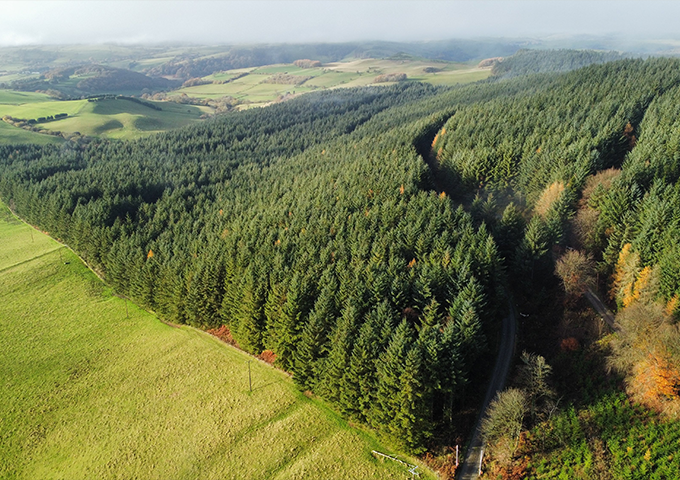
Sustainably managed forests produce a key natural resource: timber. Timber markets are a well-established natural capital market that have a long track record and are considered by many investors as a core component of natural capital portfolios. Certified, sustainable timber supports a transition to a lower carbon economy, sequestering carbon in forest biomass and soils, and may help to relieve pressure on highly diverse and threatened forests, as demand for timber grows.
Sustainable forestry management today, looks very different from decades past. Today it is the practice of managing productive forests that preserves their ecological, social, and economic values and functions for the present and future. It involves the responsible management of the natural resources within the forest, preserving the health and integrity of the forest ecosystem while also optimising the benefits to society.
Brycheiniog Forest, mid-Wales
Gresham House invested in Brycheiniog forest, planted in the 1950’s. It has evolved into a diverse mosaic of species of all ages. Containing around 200,000 cubic metres of timber, the forest represents a significant store of value to investors.
The forest supports biodiversity, providing nature corridors for species in a landscape with fragmented woodland cover. After harvesting, a greater diversity of species will be replanted, contributing positively to the forest’s biodiversity and visual impact.
The forest, including veteran trees, provides habitats for 66 protected or threatened species, including bats, dormice, and red squirrels, while ancient woodland remnants support vast numbers of invertebrate species. Advances in technology, such as DNA sampling (‘e-DNA’), will improve quantifications and management of forest biodiversity.
Sustainable agriculture
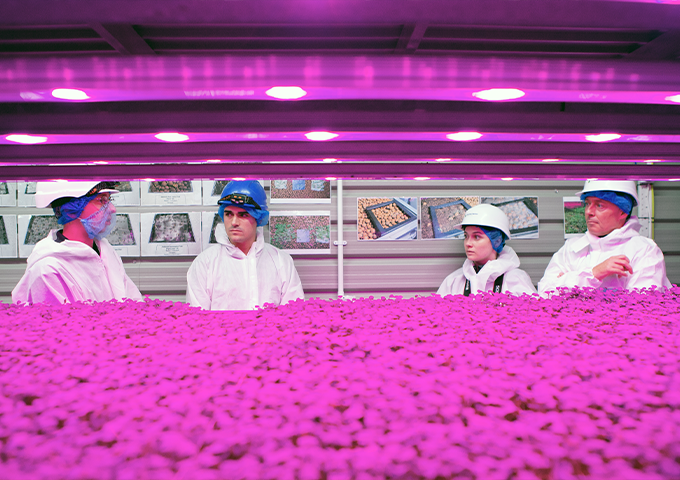
Agriculture is a large part of existing nature markets and a well-established market. However, the agricultural industry has a direct negative impact on nature prompting investors to look beyond traditional agriculture and invest in regenerative farms or innovative technology with a much lower impact on nature.
Fischer Farms
Gresham House invested into this platform to develop multiple indoor, controlled environment “vertical farm” projects that currently grow herbs and leafy greens indoors on multiple levels of shelving, using hydroponics and LEDs.
There are many positive environmental impacts from growing food in vertical farms. These include reduction in food miles and subsequent carbon emissions (growing lettuce in the UK in winter instead of flying it in from Europe), increase in shelf life reducing food waste, reduction in the use of fertiliser and pesticides and the avoidance of monocultures which contribute to the degradation of soils and loss of biodiversity.
Carbon forestry
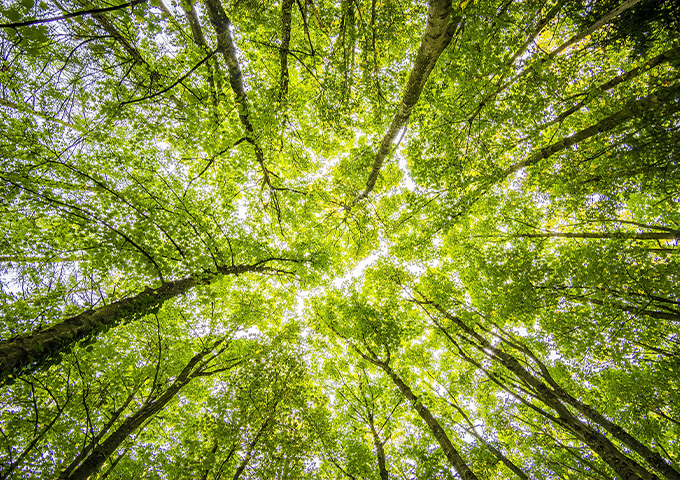
This is a developing natural capital market, placing a value on carbon sequestered in forest biomass to generate carbon credits that can be sold on voluntary or compliance carbon markets. Global carbon standards are not uniform and vary greatly, so experience is required to navigate markets and projects successfully.
Despite recent controversies, well executed afforestation projects can contribute significantly to the atmospheric carbon removals required to stabilise global temperatures and create important co-benefits for local biodiversity and ecosystem integrity.
UK and International carbon credits
Gresham House’s UK and international afforestation projects are estimated to sequester 15 million tCO2e over the next five decades.6
In New Zealand, over 92 million trees under management will generate 13 million carbon units over the project life . The compliance credits generated are designed for the New Zealand emissions trading scheme (ETS) and will generate cashflows through a long-term off-take agreement with a New Zealand based utility company.
In Scotland, one of our investments has created nearly 800 hectares of new sustainable forestry. Consisting mostly of native Scots pine and broadleaved species, the new forest is expected to sequester over 450,000 tonnes of carbon over the next 60 years6, while contributing positively to local biodiversity by creating a vital woodland corridor between lowland and upland zones.
Biodiversity creation
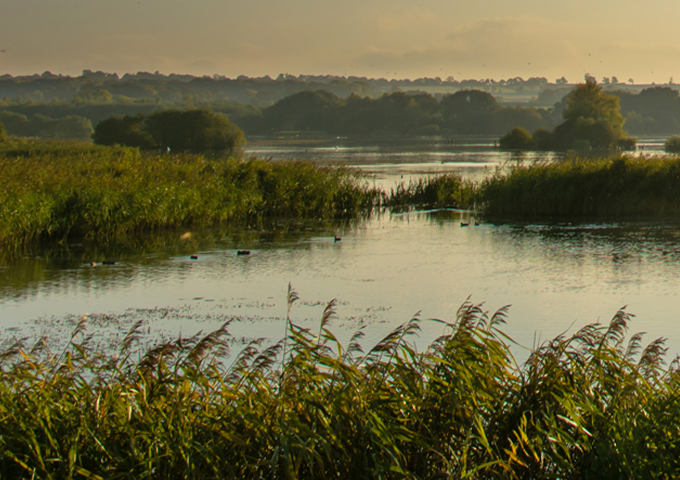
Biodiversity loss is an existential threat globally. The UK is a major culprit with only half of its biodiversity left intact, putting it in the bottom 10% globally in terms of biodiversity loss.7 However, in the last five years, a combination of regulation and voluntary frameworks have created tailwinds for delivering biodiversity as a new nature market commanding economic returns.
Environment Bank
The introduction of mandatory biodiversity net gain for planning permissions in England from January 2024, has created a catalyst for biodiversity as an investment class. Gresham House is supporting Environment Bank in the development of large landscape scale habitat banks across England. These are 25 to 500+ hectare sites where habitats such as wildflower meadows, wetlands or woodland scrub are created and will serve both this new biodiversity credit compliance market and the emerging voluntary markets which is being catalysed by businesses wanting to take action to transition to a nature-positive world.
Considerations of investing in nature
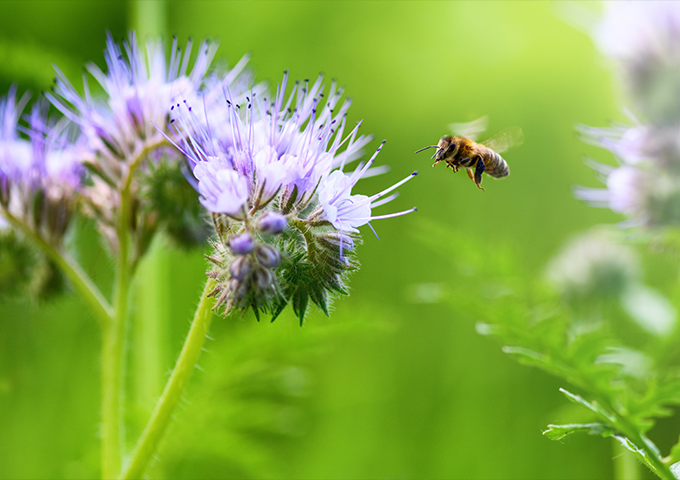
As demonstrated above, it is possible to invest in natural capital assets that offer the potential for returns and create positive outcomes for nature. Investing in natural capital assets presents a strategic opportunity for institutional investors, however it remains a relatively small component of investment portfolios due to the maturity of certain nature markets. The newer nature markets which rely on voluntary commitments from corporations or governments, can make the return profile uncertain, which can be a challenge for some investors.
Gresham House has extensive knowledge and capabilities in a variety of natural capital assets giving investors access to more established nature markets, as well as developing markets.
To address this, Gresham House can offer exposure to a balanced portfolio of natural capital investment assets giving investors access to more established markets, such as sustainable timber, together with more innovative markets, such as carbon forestry or biodiversity creation.
The choice of underlying assets in any natural capital strategy should also be influenced by the outcomes an institutional investor is aiming to target for nature and the risk/return profile they require. Delivering a financial return first is key for the majority of investors, but in addition, many are looking to invest in natural capital solutions to help achieve their net zero targets and are increasingly being driven by a desire to be nature positive, recognising the relationship between the climate crisis and the nature crisis.
Conclusion
Society cannot continue to extract from nature at this pace and prosper. The loss of nature globally is rapidly becoming a financial risk that investors are starting to take note of and want to find ways to allocate to assets that create positive outcomes for nature, and also meet their return ambitions.
As we better understand how to place a value on nature, the opportunities for investors to allocate to natural capital assets are increasing. This is not just a trend, but we believe to be a crucial aspect of a modern investment strategy. The ability of institutional investors to invest for the long term at scale uniquely positions them to allocate capital to make a difference to nature.
Gresham House has a growing natural capital platform across a range of natural capital assets, some with a multi-decade track record, where we look to balance returns with broader sustainability objectives.
1. One Planet Network – Sustainable Lifestyles Education
2. World Economic Forum
3. Taskforce on Nature Markets, McKinsey
4. UNEP State of Finance for Nature 2023 report
5. Source: 1 IPE research Jan/Feb 2024
6. Gresham House internal calculations. For more details on targets, estimates and assumptions, please contact Gresham House
7. Natural History Museum Biodiversity intactness Index, October 21
Disclaimer: Capital at risk. Investors may get back less than they originally invested. This does not constitute investment advice. The value of an investment and the income from it is not guaranteed. Case studies presented are for illustration of the strategy and should not be construed as investment advice.
Gresham House Asset Management Limited (FRN 682776) is authorised and regulated by the Financial Conduct Authority.
 Gresham House
Specialist asset management
Gresham House
Specialist asset management




